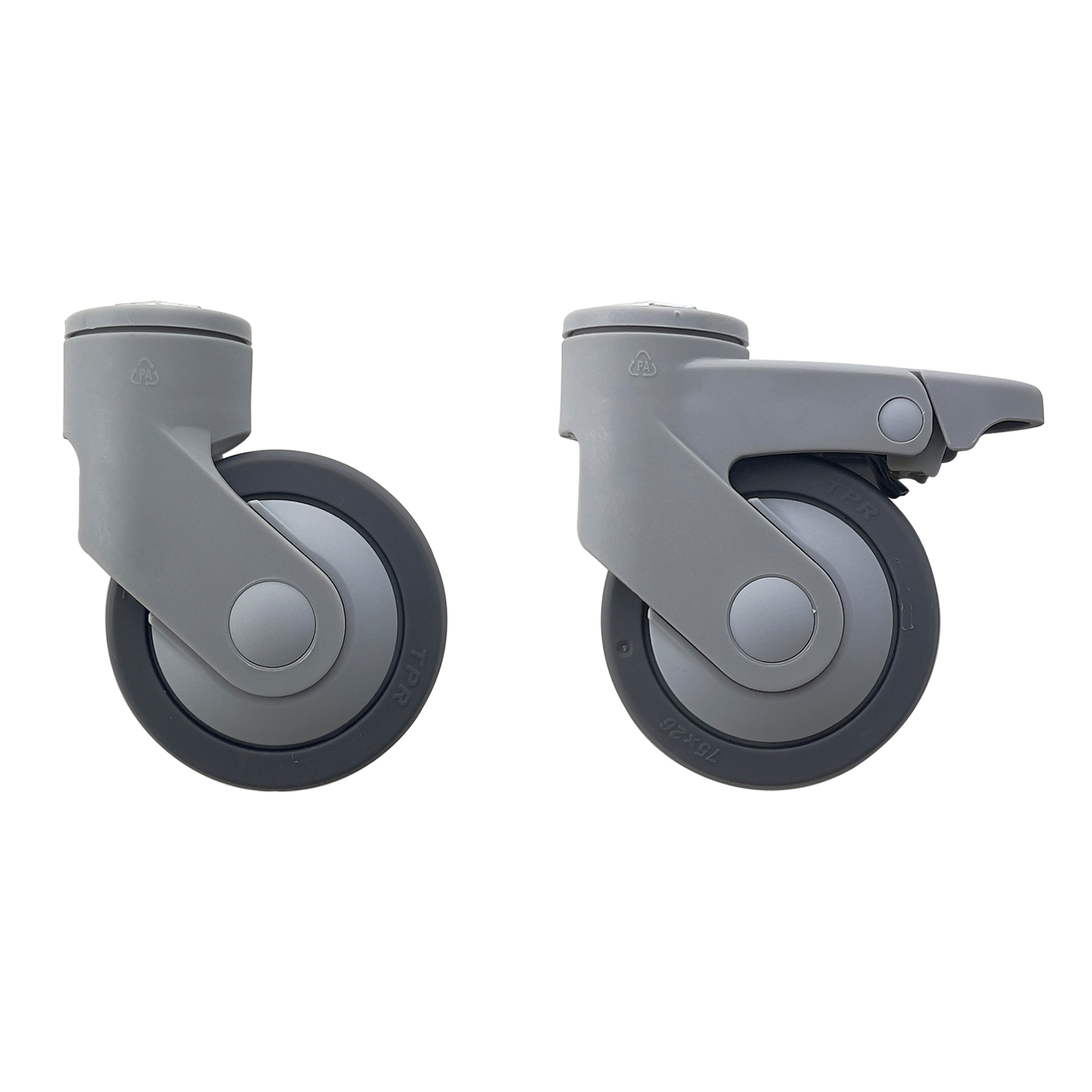Non-marking wheels are an essential component in the design and functionality of medical equipment. These specialized wheels are designed to prevent unsightly marks on floors, which is particularly important in healthcare settings where cleanliness and aesthetics are paramount. This article explores the various aspects of non-marking wheels, including their materials, benefits, applications, and considerations for selection.
Materials and Construction
Non-marking wheels are typically made from materials such as polyurethane, thermoplastic rubber, and other synthetic compounds. These materials are specifically chosen for their ability to provide a smooth, quiet ride while preventing scuffs and marks on sensitive flooring surfaces.
Polyurethane: This material is known for its durability and resistance to wear and tear. Polyurethane wheels can handle heavy loads while maintaining their non-marking properties, making them ideal for medical carts and hospital beds.
Thermoplastic Rubber (TPR): TPR wheels offer excellent shock absorption and are gentle on floors. They are also resistant to chemicals, which is crucial in medical environments where spills may occur.
Antimicrobial Coatings: Many non-marking wheels are treated with antimicrobial substances to reduce the spread of germs and bacteria, enhancing hygiene in healthcare settings.
Benefits of Non-Marking Wheels
The advantages of using non-marking wheels in medical equipment extend beyond just aesthetics. Here are some key benefits:
Floor Protection: Non-marking wheels prevent damage to floors, which is especially important in hospitals and clinics where maintaining a clean environment is critical. They help avoid costly repairs and maintenance associated with floor damage.
Noise Reduction: Medical environments require a quiet atmosphere to promote patient comfort. Non-marking wheels are designed to roll smoothly and quietly, significantly reducing noise levels compared to traditional wheels.
Enhanced Maneuverability: Non-marking wheels often feature designs that improve maneuverability, making it easier for healthcare professionals to navigate tight spaces and move equipment efficiently.
Load Capacity: These wheels come in various sizes and load capacities, allowing for versatility in different medical applications, from lightweight carts to heavy hospital beds.
Applications in Healthcare
Non-marking wheels are used in a wide range of medical equipment, including:
Hospital Beds: Smooth-rolling, non-marking wheels make it easier to reposition beds without damaging floors.
Medical Carts: Carts used for transporting supplies, medications, and equipment benefit from non-marking wheels, ensuring they can be moved without leaving marks.
Diagnostic Equipment: Equipment such as ultrasound machines and x-ray carts often require non-marking wheels to maintain the integrity of the floors in examination rooms.
Surgical Instrument Carts: These carts must be maneuverable and quiet, making non-marking wheels an ideal choice.
IV Poles and Stands: Non-marking wheels help maintain a clean environment while allowing easy movement of IV stands.
Considerations for Selection
When selecting non-marking wheels for medical equipment, several factors should be considered:
Load Capacity: Ensure that the wheels can support the weight of the equipment they will be used with. This includes considering the maximum load and any additional weight from supplies.
Wheel Size: The diameter of the wheels affects maneuverability and stability. Larger wheels can roll over obstacles more easily, while smaller wheels may be better for tight spaces.
Surface Compatibility: Consider the type of flooring in the facility. Non-marking wheels are designed to work well on various surfaces, but specific materials may perform better on certain floors.
Environmental Conditions: If the wheels will be used in environments with potential chemical spills or exposure to moisture, selecting wheels with appropriate resistance properties is essential.
Maintenance Requirements: Non-marking wheels should require minimal maintenance to ensure longevity and performance. Look for options that are easy to clean and maintain.
Conclusion
Non-marking wheels are a vital component of medical equipment, providing numerous benefits that enhance functionality, safety, and cleanliness in healthcare settings. Their ability to protect floors, reduce noise, and improve maneuverability makes them an indispensable choice for hospitals, clinics, and other medical facilities. As healthcare continues to evolve, the importance of high-quality, non-marking wheels will remain a key focus in the design of medical equipment. When selecting non-marking wheels, it is crucial to consider factors such as load capacity, wheel size, and environmental conditions to ensure optimal performance and longevity.

